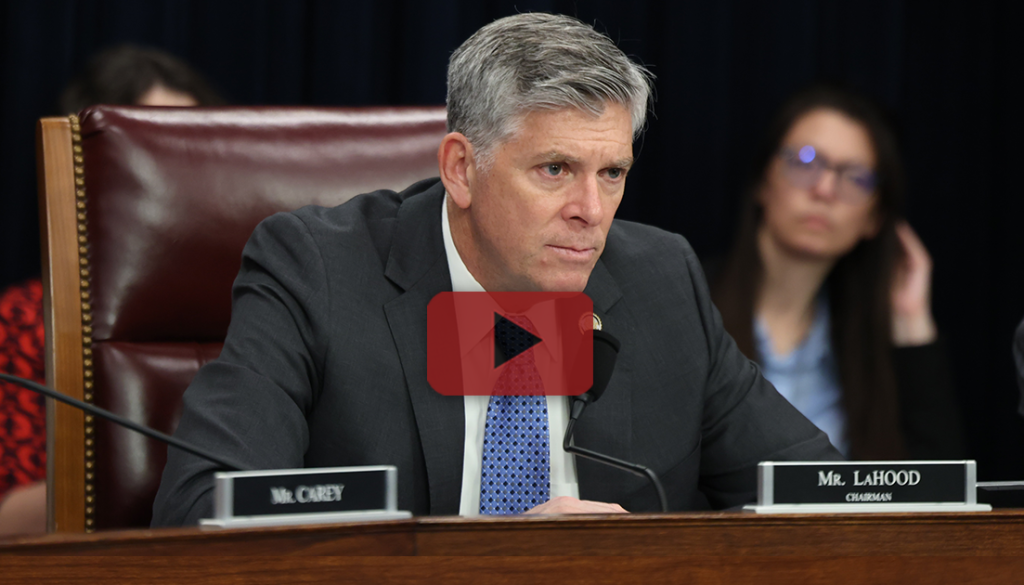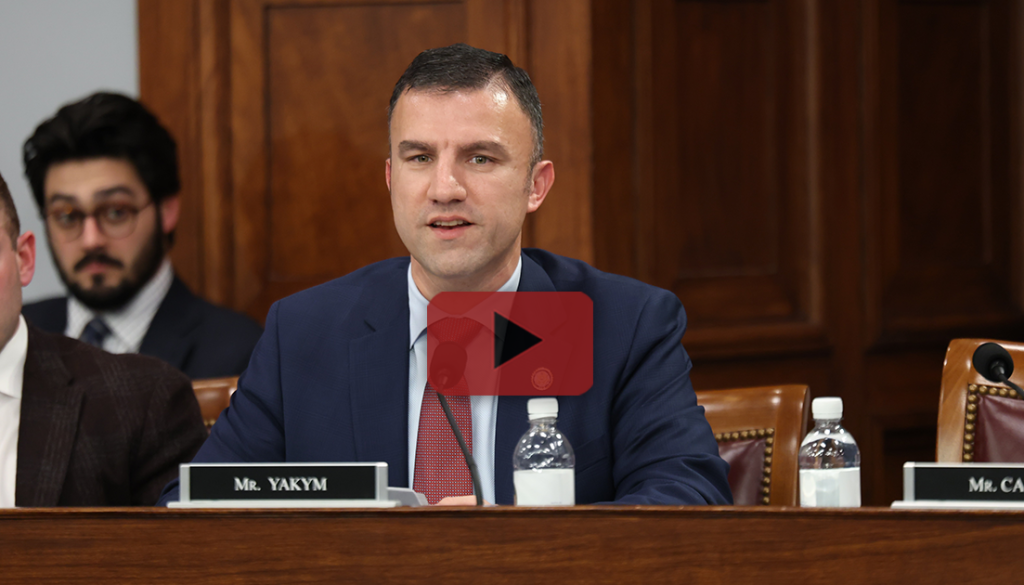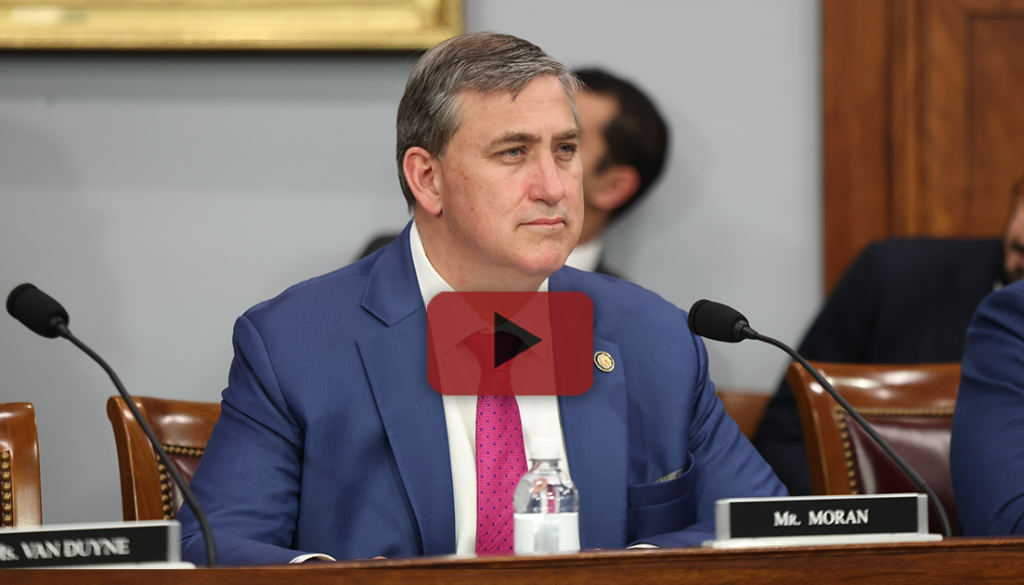WASHINGTON, D.C. – The Temporary Assistance for Needy Families (TANF) program is in need of greater accountability to prevent fraud and misuse, according to reports produced by the Government Accountability Office (GAO) and examined during a Ways and Means Work and Welfare Subcommittee hearing this week. Seventy-eight percent of federal TANF dollars is spent on non-assistance, which is the portion of the program covering social service activities other than direct cash assistance. The reports, written by GAO experts testifying at the hearing focused on the non-assistance side of TANF and reveal a lack of basic financial guardrails that create a ripe environment for waste, fraud, and abuse.
Ways and Means Committee Chairman Jason Smith (MO-08) and Work and Welfare Subcommittee Chairman Darin LaHood (IL-16) jointly requested the GAO’s analysis to determine the extent of vulnerabilities in TANF.
“Black Box”: States Do Not Report Data on Who is Served, Quality of Services, or Outcomes for Non-Assistance Spending
A consistent theme in GAO’s analysis is the lack of transparency about how states spend federal TANF funds. One glaring issue is that there is no statutory federal requirement for states to provide information to the Department of Health and Human Services (HHS) about the populations served or outcomes of beneficiaries receiving non-assistance services. The GAO urged HHS to require states to report the recipients of non-assistance TANF funds as a necessary step to root out fraud and enhance federal oversight of the program.
Rep. Darin LaHood (IL-16): “Mr. Arkin, you mentioned in your testimony that GAO found that states are not reporting complete information about TANF expenditures and most states lacked transparent reporting on subgrantees. For example, in your testimony, you said seven out of 31 states did not provide or had incomplete narrative explanations of non-assistance spending for FY 2022. This is extremely concerning, because otherwise it’s like a black box that we don’t know what categories a state spends in. Your report provides recommendations for HHS, but are there any legislative recommendations you would make to improve transparency of state non-assistance spending, so we can know the impact of the dollars and where they’re actually being spent?”
Jeffrey Arkin, GAO Director of Strategic Issues: “Short answer, yes, we do. The issue is most of the reporting requirements on the law apply to assistance spending and actually prohibit HHS from collecting information on non-assistance spending, because it’s not a specific statutory authority provided in the law. We think information that allows HHS to ask states to discuss what are they planning to do in the non-assistance area, and to whom are they going to provide the funds…That’s something that would help not just with oversight of spending, but also potentially help HHS provide an estimate of improper payments. It’s really key information for them to be able to do that.”
“If You Don’t Know What the Risk Is, You Can’t Respond to It.”
The GAO uncovered vulnerabilities in HHS’s fraud risk assessment, finding the agency’s practices fall below leading best practices. The agency’s fraud risk assessment portal is not designed to appropriately detect and determine the likelihood of fraud risks. Further, electronic benefit transfer (EBT) cards carry a special risk for fraud. GAO recommended HHS develop its capability to more fully assess fraud risk within TANF.
Rep. Rudy Yakym (IN-02): “Another important part of ensuring that funds go to those who need it most is rooting out waste, fraud and abuse. Mr. Bagdoyan, in the GAO report, ‘Additional Funds Needed to Strengthen Risk Fraud Management,’ the GAO reviewed the fraud risk practices at HHS. The report shared how most states disperse funds through electronic benefit transfer, or EBT cards, which allow people to withdraw cash and make purchases. GAO uncovered how EBT cards were sold on an e-commerce website with values from $100 to over $5,000. Why is it important to assess the magnitude of fraud risks?”
Seto Bagdoyan, GAO Director of Forensic Audits and Investigative Services: “If you don’t know what the risk is, you can’t respond to it. That’s the bottom line. EBT misuse has been flagged in single audits. We have discovered it through other means, through our own research. Since it’s a prevalent vehicle of dispersing TANF funds, it naturally attracts the attention of fraudsters. In California, for example, in this instance, fraudsters placed mini cameras in ATMs and recorded the personal information of those accessing their funds and then reversed the process and stole the money.”
Rep. Yakym: “What guardrails do you believe that we should put in place to decrease and prevent fraud?”
Bagdoyan: “It starts with the fraud risk assessments that will uncover what the risk is about and what controls are most suitable to respond to it right.”
Lack of TANF Accountability Robs Americans in Need of Job Opportunities
States can use TANF non-assistance funds for any of the four stated purposes of TANF, however, many have diverted TANF away from helping individuals find work and instead used TANF funds to fill budget gaps and supplant state spending. Relatedly, the GAO found states carried a balance of $9 billion in unspent TANF funds. A GAO report recommended bolstering the states reporting requirements to provide accountability that money is in fact being spent on one of TANF’s four purposes.
Rep. Nathaniel Moran (TX-01): “These five GAO reports show that there’s a lot of work that we have to do. Those reports…identified 21 fraud risks in nine different categories, including billing fraud, misuse of award funds and diversion. There’s a lack of data on demographic characteristics that we’ve already talked about today, lack of data on participation and outcomes. Ninety-nine audit findings, this was amazing to me, that we have seen were repeated findings that were never addressed. There’s a lot of work to do…Mr. Bagdoyan, what are some of the biggest fraud risks that you have seen or that you’re aware of in the TANF program?”
Seto Bagdoyan, GAO Director of Forensic Audits and Investigative Services: “The EBT risk, Mr. Moran, is paramount. It is an easy vehicle for fraudsters to target. There have also been instances of falsified invoices for inflated costs or services not rendered. Also the comingling of TANF funds with other sources of funding for assistance, basically disguising the original TANF funding and then spending it for non-TANF purposes. Those are some of the prominent ones that we have focused on.”
READ: Congressional Watchdog Reports Underscore Need for Ongoing TANF Oversight and Reform



